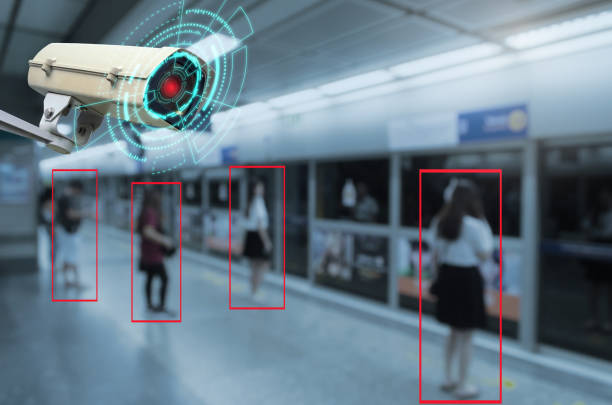Simplisafe Wireless Interference Detected: What You Need to Know Detected? SimpliSafe is a popular choice for home security systems, known for its wireless design and ease of installation. However, like any wireless technology, SimpliSafe systems may encounter interference issues, which can affect their reliability and performance. In this blog, we’ll delve into the topic of SimpliSafe wireless interference, exploring the causes behind it, solutions to mitigate its impact, and preventive measures to ensure optimal system functionality.
Understanding Wireless Interference:
Wireless interference refers to the disruption or degradation of wireless signals due to external factors. In the context of SimpliSafe home security systems, wireless interference can manifest as signal dropout, delayed notifications, or sporadic device connectivity. Identifying the root causes of interference is crucial for effectively addressing and resolving these issues.
Causes of SimpliSafe Wireless Interference:
Physical Obstacles:
Physical barriers such as walls, furniture, or large appliances can obstruct wireless signals, leading to signal attenuation or loss. Thick walls or metallic surfaces are particularly effective at blocking or reflecting radio frequencies, causing interference in the communication between SimpliSafe devices.
Electronic Devices:
Other electronic devices operating on similar frequencies can cause interference with SimpliSafe signals. Common culprits include Wi-Fi routers, cordless phones, baby monitors, and microwave ovens, all of which emit electromagnetic radiation that can disrupt wireless communication.
Environmental Factors:
Environmental conditions such as electromagnetic interference from nearby power lines, radio towers, or even atmospheric phenomena like solar flares can impact wireless signal integrity. Additionally, densely populated areas with numerous wireless networks may experience increased interference due to signal congestion.
Frequency Congestion: SimpliSafe systems typically operate on the 433 MHz or 315 MHz frequency bands, which are also utilized by other wireless devices. In areas with high-frequency congestion, multiple devices competing for the same frequency spectrum can lead to interference and signal degradation.

Solutions to Mitigate SimpliSafe Wireless Interference:
Optimize Device Placement:
Position SimpliSafe devices strategically to minimize obstructions and maximize signal strength. Avoid placing devices near large metal objects or dense walls, and ensure that they have a clear line of sight to the base station.
Update Firmware and Software:
Regularly update the firmware and software of SimpliSafe devices to ensure compatibility with the latest protocols and optimization for interference mitigation. Manufacturers often release updates to address known issues and improve system performance.
Adjust Router Settings:
If Wi-Fi interference is suspected, adjust the settings of the Wi-Fi router to operate on different channels or frequencies. This can help alleviate congestion and reduce interference with SimpliSafe signals.
Utilize Signal Repeaters:
In larger homes or areas with weak signal coverage, consider using signal repeaters or range extenders to amplify SimpliSafe signals and improve device connectivity. These devices can help overcome signal attenuation caused by distance or obstacles.
Preventive Measures for Optimal Performance:
Conduct Site Surveys:
Before installing SimpliSafe devices, perform a site survey to identify potential sources of interference and plan device placement accordingly. This proactive approach can help minimize interference-related issues from the outset.
Educate Users:
Provide users with guidance on best practices for optimizing SimpliSafe system performance, including device placement recommendations and troubleshooting tips for addressing interference issues.
Monitor Signal Strength:
Regularly monitor signal strength and device connectivity within the SimpliSafe system through the companion mobile app or web portal. This allows users to identify and address any interference-related issues promptly.
Conclusion:
SimpliSafe wireless interference can pose challenges to the reliability and performance of home security systems, but with proper understanding and proactive measures, these issues can be effectively mitigated. By identifying the causes of interference, implementing solutions to minimize its impact, and adopting preventive measures for optimal performance, users can ensure the uninterrupted functionality of their SimpliSafe systems and enjoy peace of mind knowing their homes are secure.
Frequently Asked Questions about SimpliSafe Wireless Interference:
What causes wireless interference in SimpliSafe systems?
Wireless interference in SimpliSafe systems can be caused by physical obstacles, electronic devices emitting electromagnetic radiation, environmental factors, and frequency congestion in densely populated areas.
How can I identify wireless interference in my SimpliSafe system?
Signs of wireless interference include signal dropout, delayed notifications, sporadic device connectivity, or unexpected system behavior. Monitoring signal strength and device performance can help identify interference issues.
What steps can I take to mitigate wireless interference with SimpliSafe?
To mitigate wireless interference, optimize device placement, update firmware and software, adjust router settings to reduce Wi-Fi interference, and utilize signal repeaters or range extenders to improve signal coverage.
Can physical obstacles affect SimpliSafe signal strength?
Yes, physical obstacles such as walls, furniture, or large appliances can obstruct SimpliSafe signals, leading to signal attenuation or loss. Positioning devices strategically and minimizing obstructions can help improve signal strength.
Are there specific frequencies that SimpliSafe systems operate on?
SimpliSafe systems typically operate on the 433 MHz or 315 MHz frequency bands, which are common for wireless security devices. These frequencies may be susceptible to interference from other wireless devices operating in the same spectrum.
How can I prevent wireless interference in my SimpliSafe system?
Preventive measures include conducting site surveys before installation, educating users on best practices for device placement, monitoring signal strength regularly, and staying informed about firmware updates and optimization techniques.
Can environmental factors impact SimpliSafe signal integrity?
Yes, environmental factors such as electromagnetic interference from power lines or radio towers can impact SimpliSafe signal integrity. Additionally, densely populated areas with numerous wireless networks may experience increased interference.
Are there troubleshooting steps for addressing wireless interference issues with SimpliSafe?
Yes, troubleshooting steps may include repositioning devices, updating firmware and software, adjusting router settings, and utilizing signal repeaters or range extenders. Monitoring signal strength and consulting SimpliSafe support resources can also help diagnose and resolve interference issues.
You may read: How to Choose the Right Home Water Meter for Your Home


2 thoughts on “Simplisafe Wireless Interference Detected: What You Need to Know Detected?”